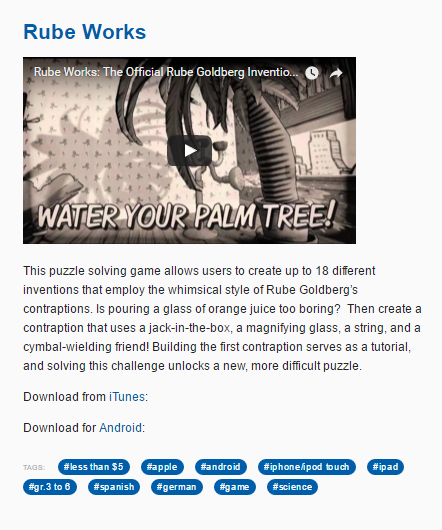There’s been much discussion over the ways in which librarians can use social media as individuals, whether to promote their organizations, run programs, or express their own opinions. However, there’s another affordance of social media which librarians can capitalize on, and that is using social media as software.
One of the most obvious examples of this is the BiblioCommons software program BiblioCore. BiblioCore essentially functions as an OPAC, or Online Public Access Catalogue. Some of the main affordances of BiblioCore are:
- The ability to link databases, photos, and staff blogs into the catalogue so that users can discover them and access them directly from their main search
- The integration of eBooks into the library catalogue so that they are searchable and borrowable from the main OPAC
- The ability for patrons to create an account and sign in with a username and password instead of library card number and pin number
- The addition of social features are into the catalogue, including reviews, personalized book lists, and the ability to search other patrons book lists (including from other libraries and other countries using BiblioCore)
- The ability to add staff curated lists on different topics into the catalogue, opening up a new form of reader’s advisory
The main visible change for patrons is the addition of social features into the catalogue, and Linda Berube refers to this as the Web 2.0 evolution of the OPAC into the “SOPAC” or Social OPAC (Berube, p. 66). In utilizing this SOPAC, libraries are moving to meet users in the middle, by providing traditional library services packaged with some of the features that are expected in the social media platforms they are commonly using in their daily lives. It is an evolution not only in social media but also in librarianship.
Another example of this type of social media software use is the West Vancouver Memorial Library Youth Department’s “App Tumblr”. At WVML the Youth Department has a “Petting Zoo” of devices for children to explore. This includes a number of iPads loaded with librarian reviewed and selected apps for children and families to check out and try. While these apps aren’t an “item” in the same way that books or even eBooks are, they’re still part of the library collection and something the library wants to promote.
These apps couldn’t be added into a traditional catalogue, so the WVML youth department instead uses Tumblr as an extension of their catalogue – and a place where they can provide reviews of the apps on their iPads. These reviews are also catalogued using a controlled vocabulary on the site, enabling users to search among them for specific apps for different age groups, themes, or activities. In this manner, the youth librarians are using social media to showcase a part of their collection which would otherwise be invisible and unsearchable to users outside of the library.

Just two more instances of social media and librarians in action!
Berube, Linda. (2011). Do You Web 2.0?: Public Libraries and Social Networking. Oxford: Chandos Publishing. Accessed: https://books.google.ca/books?id=2LtmAgAAQBAJ&source=gbs_navlinks_s
BiblioCommons. (2015) “BiblioCore” http://www.bibliocommons.com/default/files/BiblioCore_2015.pdf